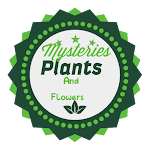Few plants have captured the attention of traditional practitioners and modern researchers alike and we will be talking about the Walnut Plant.
This deciduous tree has been a staple in natural medicine for centuries, and its benefits extend far beyond its reputation as a nutritious food. Let's delve into the world of Walnut and explore its history, uses, and surprising applications.
A Rich History
Walnut's use dates back to ancient civilizations, where it was revered for its medicinal and culinary properties. In traditional European medicine, Walnut was used to treat a range of ailments, from skin conditions to digestive issues and respiratory problems. Its popularity endured through the Middle Ages and into modern times, with its nutritional benefits taking center stage.
Medicinal Properties
Walnut contains a unique combination of:
Juglone, a powerful antioxidant with anti-inflammatory properties
Vitamin E, supporting skin health and immune function
Omega-3 fatty acids, promoting heart health and brain function
Flavonoids and phenolic acids, contributing to its antioxidant properties
Surprising Uses
Walnut is used in:
🌱Herbal teas and infusions, supporting digestive health and relaxation (Leaves and husks are used for tea)
🌱Skincare products, thanks to its antioxidant and anti-inflammatory properties (Walnut oil is used in skincare)
🌱Hair care products, promoting healthy hair growth and scalp health (Walnut oil is used in hair care)
🌱Food, as a nutritious snack or ingredient in various dishes
Growing and Harvesting
Walnut is a deciduous tree that thrives in well-drained soil and full sun. Harvest the leaves, husks, and nuts in autumn, drying them promptly to preserve their potency.
Walnut is a versatile and underappreciated plant, offering a range of benefits for our overall well-being. By exploring its medicinal properties and uses, we can unlock its full potential and discover new ways to incorporate it into our lives. Share your experiences with Walnut in the comments below, and let's continue exploring the wonders of the herbal world together!
Credit: Mysteries of Plants and Flowers

